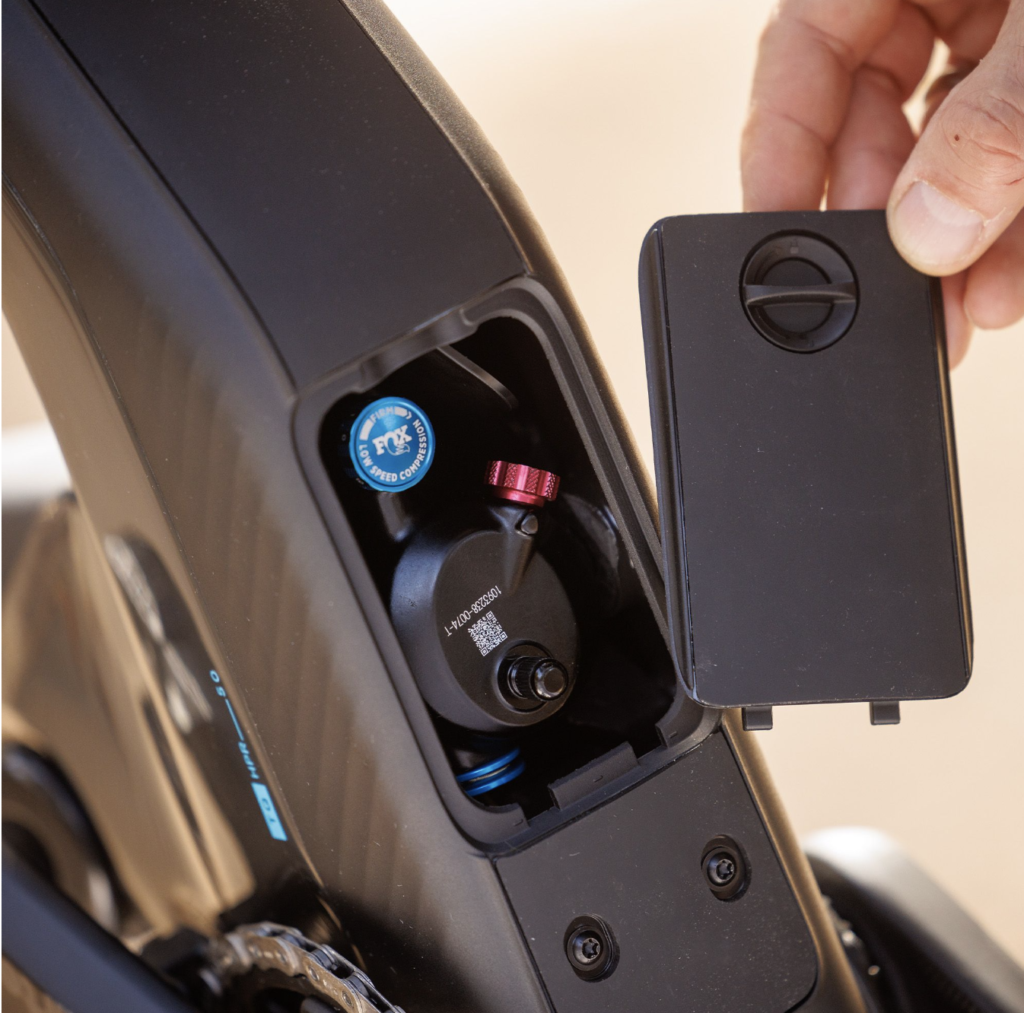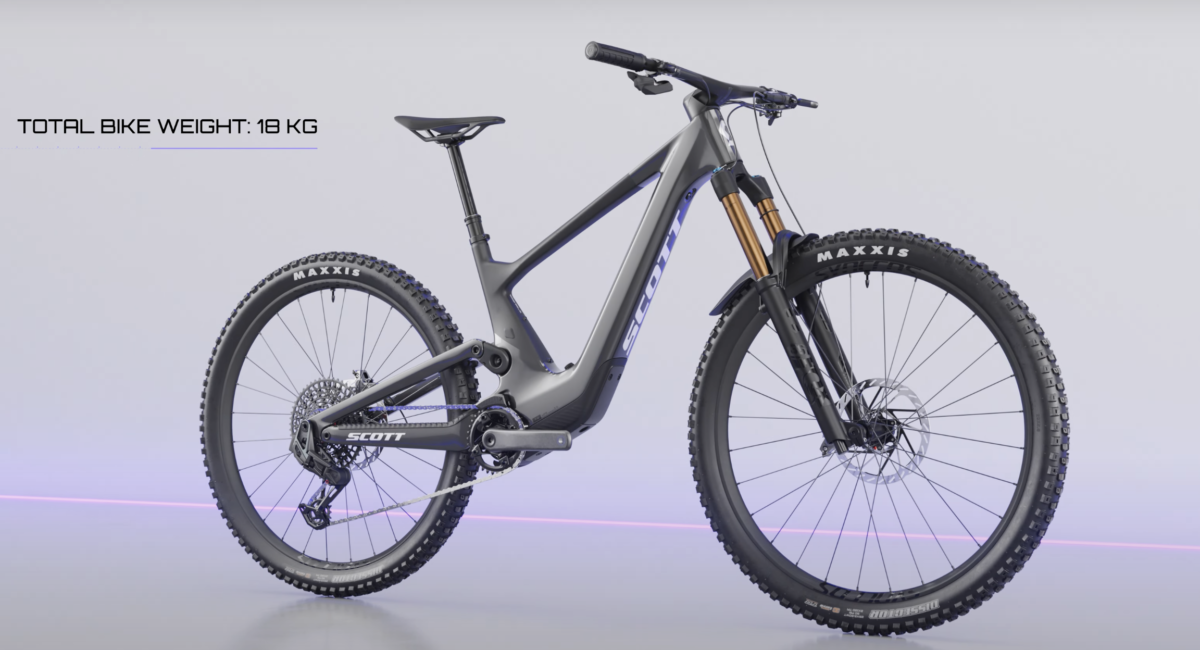The Revived Scott Voltage; very meh.
The Scott Voltage name returns, this time attached to an electric bike that draws more from the current Genius than its freeride ancestor. The new Voltage eRide is decked out with a hidden shock, a carbon frame, 29″ wheels, and a significant 155/160 mm suspension travel. While it mirrors the Genius’s electric counterpart in complexity, the Voltage brings its own set of challenges to the table.

Frame & Motor:
Scott’s attempt to incorporate a motor, battery, and shock within the Voltage eRide’s frame is ambitious. The bike is equipped with the TQ HPR 50 motor and a 360 Wh battery, neatly integrated but contributing to a design that might feel overly intricate for some. This complexity extends to the frame’s capability to house a range extender alongside a water bottle, which, while innovative, adds to the bike’s overall complexity.

Suspension System:
Here lies a significant source of contention: the bike’s suspension system. The inclusion of Scott’s TwinLoc or TracLoc systems adds multiple levers to the handlebars, which can be overwhelming and, frankly, unnecessary for many riders. While the intent is to offer versatility, the execution results in an overabundance of controls that may detract from the riding experience.

Geometry and Design:
The Voltage eRide’s geometry does make sense on paper, offering a stable and responsive ride. However, the real-world application reveals that practicality may have taken a backseat to aesthetics and novelty. The bike’s weight, though comparable to the original Voltage, is considered average for modern e-bike standards, nothing extraordinary. Especially compared to Cannondale’s latest offering which I overviewed the other day, its the same weight, but has 35nm more of torque…….
Pricing and Models:
The Voltage eRide’s pricing spectrum – from $6,600 to $12,999 – positions it as a premium offering. However, potential buyers might question the value, given the bike’s complex design and the practical drawbacks of its heavy and cumbersome frame.
Pros and Cons of the Scott Voltage eRide:
Pros:
- Adjustable Geometry: Offers customization to fit personal riding styles and trail demands.
- Silent Motor: The TQ HPR 50 motor is known for its quiet operation, enhancing the natural riding experience.
Cons:
- Overly Complex Design: The frame’s complexity, combined with an abundance of levers, can be daunting.
- Underwhelming Weight: Despite advancements, the bike’s weight remains a significant downside for those seeking a nimble ride.
- Excessive Controls: The multitude of suspension and adjustment levers complicates the handlebar area, potentially overwhelming riders.
- High Price Point: The cost may not justify the features and performance, especially considering the practical challenges of the design.
In summary, while the Scott Voltage eRide reaches high with its ambitious design and technical features, it may miss the mark for riders looking for simplicity and practicality. The bike’s complexity, weight, and price point are significant considerations that might overshadow its innovative aspects. It’s a bike that makes sense on paper, but in practice, it could leave riders longing for less complexity and more straightforward enjoyment.










Leave a Comment